Four Bears Village & Bridge
July 2023 - NewTown, ND #33-2023
DISCOVERIESSNAPSHOTS
AL
7/22/2023

While on our way to Summit Campground we passed through New Town and planned to stop at an overlook known as Crow Flies High Butte, just before crossing the bridge. It is named in honor of a respected chief by that name, and provides a great vantage point to view the expanse of the bridge and Lake Sakakawea. After Tom guided the motorhome up the steep road to the viewing area, we seen this first hand. He says it was steeper than expected coming down the hill, with his foot pressing on the brake pedal the whole time while in first gear, ensuring it would stop at the bottom. They say when the water is low, you can see from this point the remnants of the town of Old Sanish that was submerged after the dam was built. These are the views from the top of the overlook.
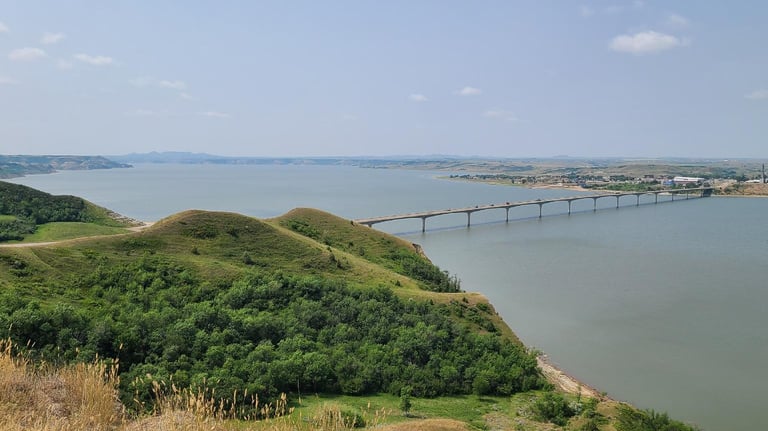

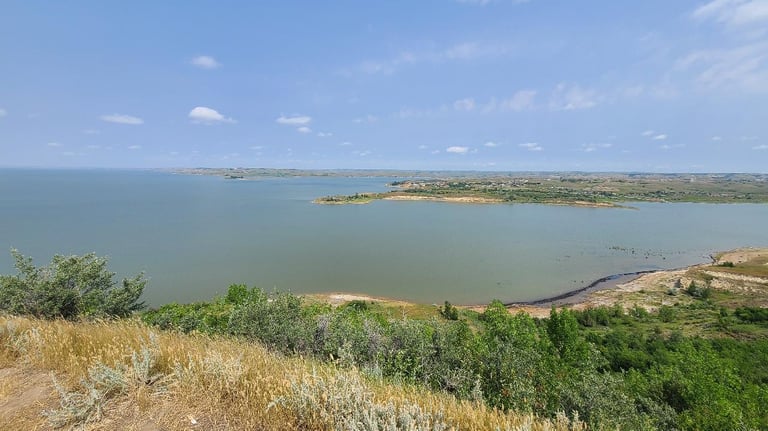

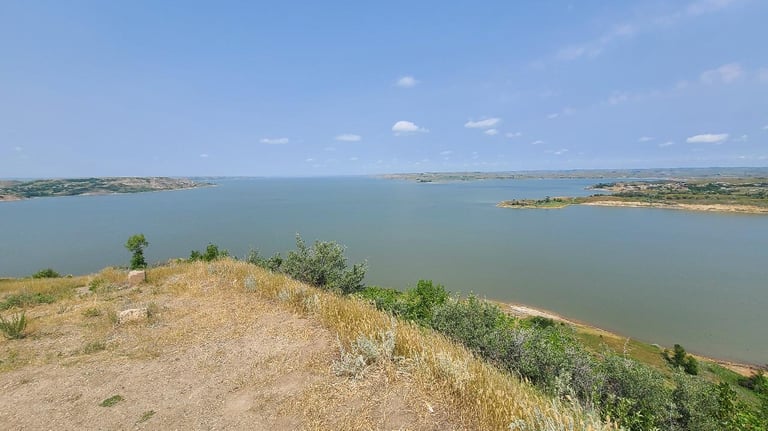

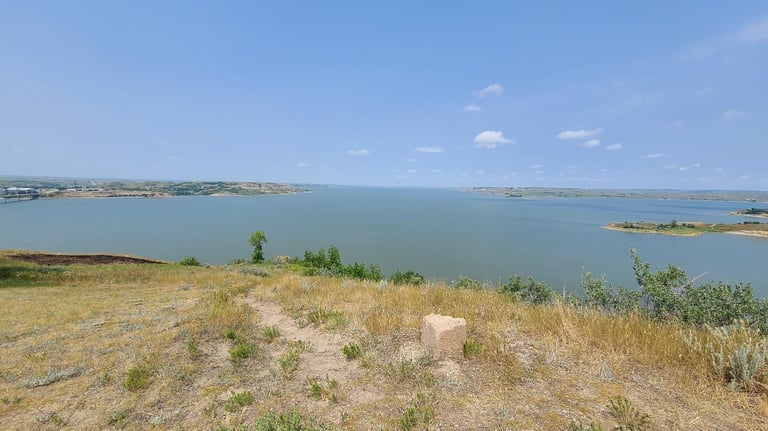

The Four Bears Bridge in New Town, North Dakota, is in it’s third incarnation. It holds the distinction of being the longest bridge in the State. The bridge here today is a sleek, modern, concrete structure that weaves the stories of the native people, whose ancestors for centuries called this area home. Medallions along the bridge rails mark some of the people and cultures significant to the tribes and are fascinating to read. A plaza in a small park at the west end of the bridge details its history, has pieces of the original bridge, and large markers explaining the significance of each medallion. At Tom’s suggestion, I took some time to browse through the park, walk the length of the bridge both ways, and read the stories of the people before catching up with him at the next campground.
The Mandan, Hidatsa, and Arikara tribes had been greatly reduced by the smallpox epidemics of the 1800’s, and subsequently decided to merge their groups into one affiliated nation. Within the boundaries of the Fort Berthold Reservation along the Missouri River, they lived in peace and harmony in communities with interesting names like Like-A-Fishhook Village, Crow Flies High Village, and Elbowoods.
After many years, the people living in this area were able to persuade the North Dakota State Legislature to construct a bridge on the Reservation at the village of Elbowoods. That bridge was completed in 1934 and at a length of 1600 feet, it was an engineering achievement. It was the first bridge of it’s type in the state and, at the request of the three affiliated tribes, it was named for two different chiefs named Four Bears: one from each the Hidatsa and the Mandan tribes. It improved conditions on the Reservation since their tribes were no longer divided by the river.
In 1954, with the construction of the Garrison Dam and the creation of Lake Sakakawea, several villages were flooded under the rising waters. The village of New Town was created before the dam was built, to be a community to which these dislocated people could move. The State dismantled the original Four Bears bridge, floated it upstream, and reconstructed it to connect New Town with the west side of the lake. In order to accomplish this, they substantially lengthened it by constructing approach spans to the original truss. The new length of the bridge was 4,483 feet. This bridge served the area for 50 years before it was replaced by the current bridge in 2005. There are 12 panels displayed in the plaza and on the bridge, with these shown below just being a sample.
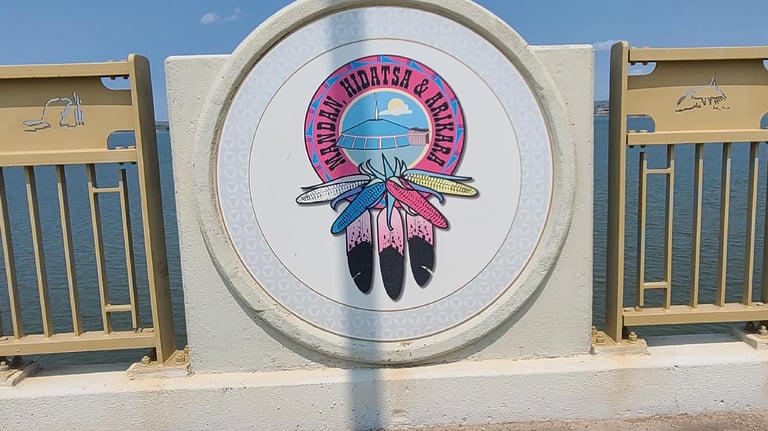

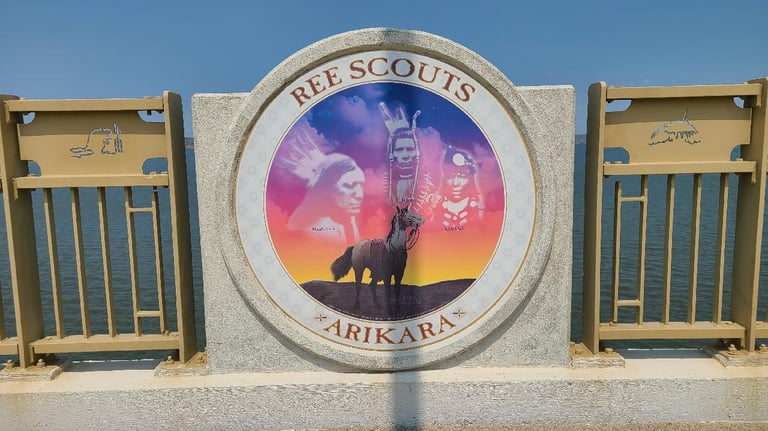

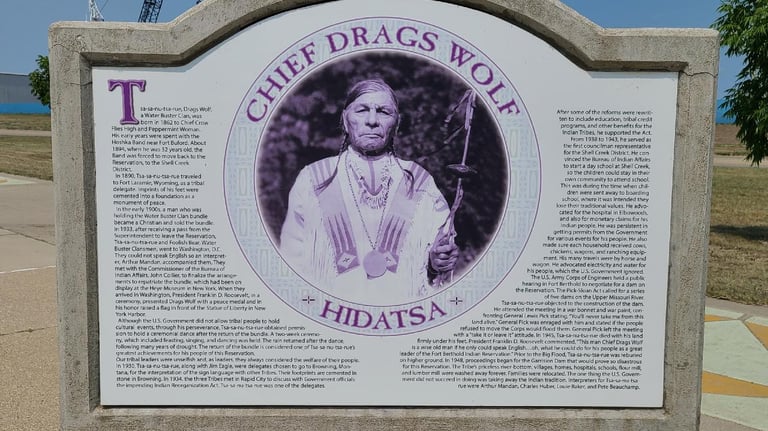

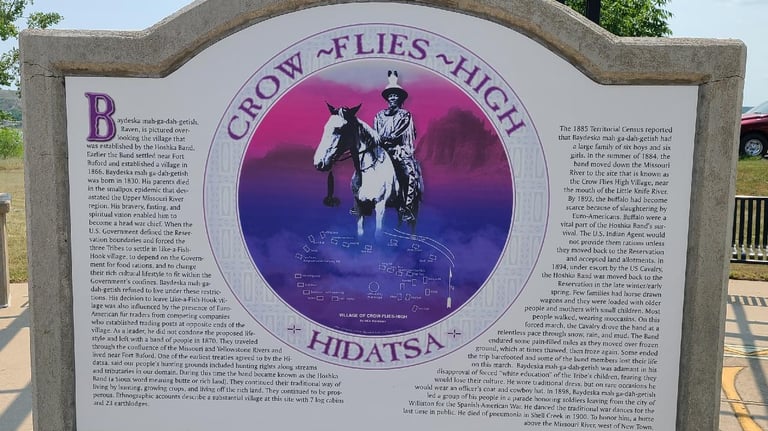

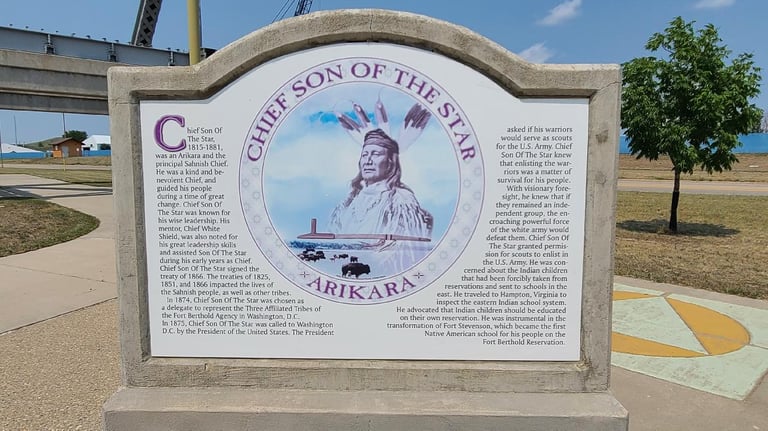

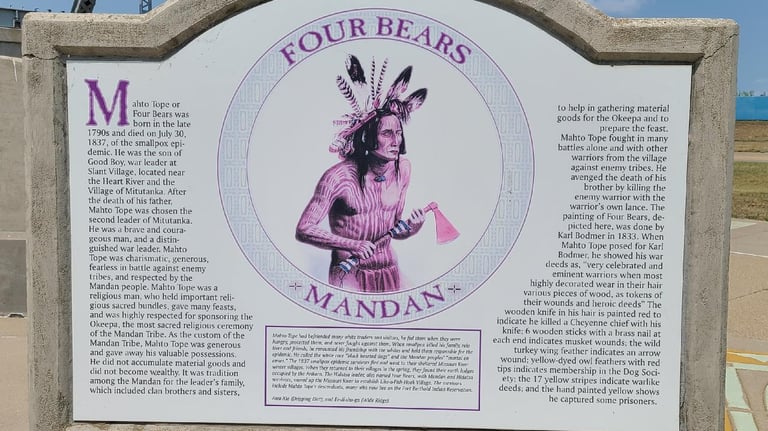

Once on the west side of the bridge, Tom had called saying he noticed several silhouette figures at the tops of the surrounding hills. I went to investigate, finding the MHA Interpretive Center behind all those silhouettes and hills. Outside the main entrance, there is an interesting statue of three figures representing the three tribes. In a village setting on the site are replicas of the earth lodges in which the tribes had lived. These dwellings are constructed in the same manner as I found at Knife River Indian Village, but are left unfurnished. The silhouettes are figures of Native Americans representing different parts of their culture and daily life.
Currently only about 1/3 of the MHA Nation lives on the Fort Berthold Reservation, with 2/3 living in the surrounding areas and around the world. Reading about the struggles of the people from this area, the loss of fertile, productive lands, the repeated relocations, the decimation by diseases and battles, I can see how they could have been torn apart and scattered to the winds, but they repeatedly regrouped, regathered, made plans, and forged ahead. Their example should show me that how you respond to an issue greatly affects the outcome. I can chose to let thing happen, or I can be proactive and make it better. Each day can be a challenge for me to stay positive, motivated, excited, engaging, thoughtful, helpful, or even talkative, but Tom is always there to encourage me, trying to make sure I have the best life possible. I need to take the example of the Mandan, Hidatsa, and Arikara and do the same for him. Some days are successes and others are failures, but just remember each day is a new chance to succeed, and you can’t succeed if you don’t try.
I am thankful that he noticed the figures and suggested I go back to look for them, to spend time at the bridge while he went ahead to set up camp. They were even doing an inspection of the bridge while I was there, bringing back memories from my time as a civil engineer years ago, which through an unusual twisted and turning journey has brought me to where I am today and my appreciation of this bridge.
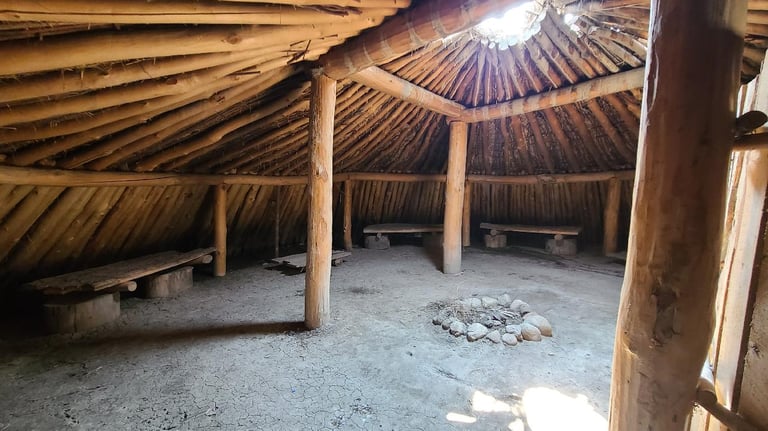


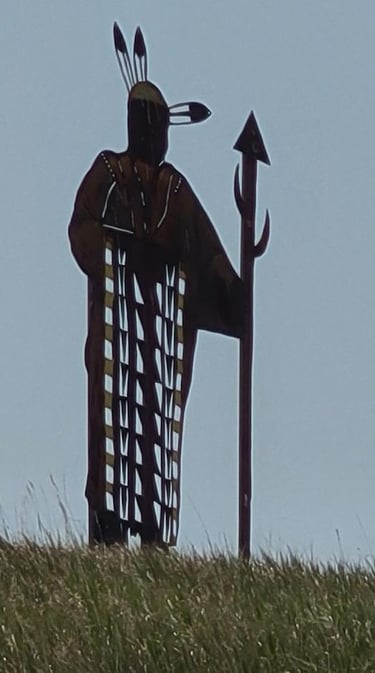
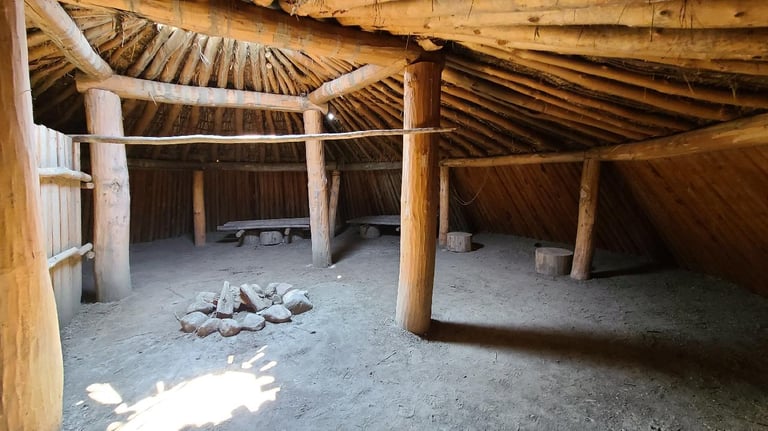

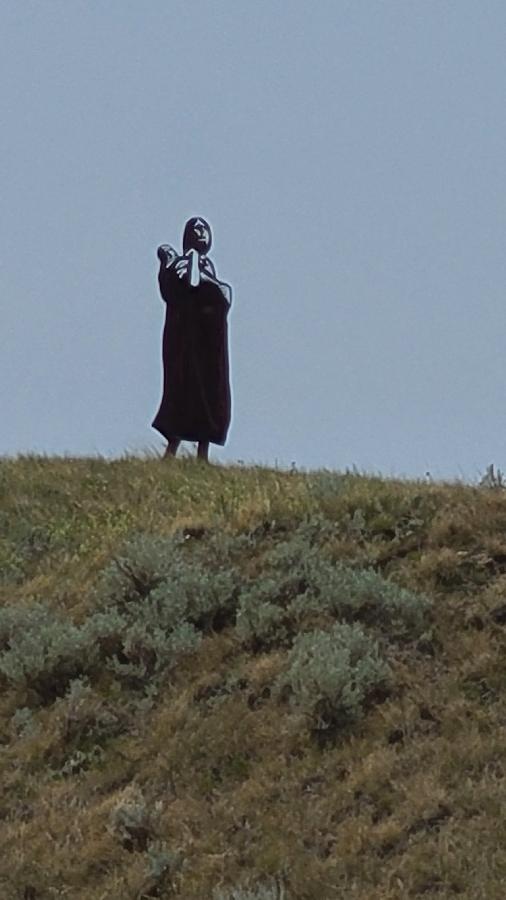

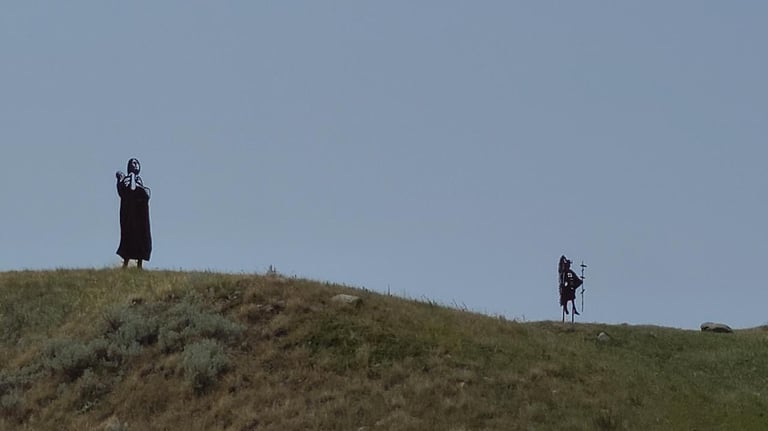

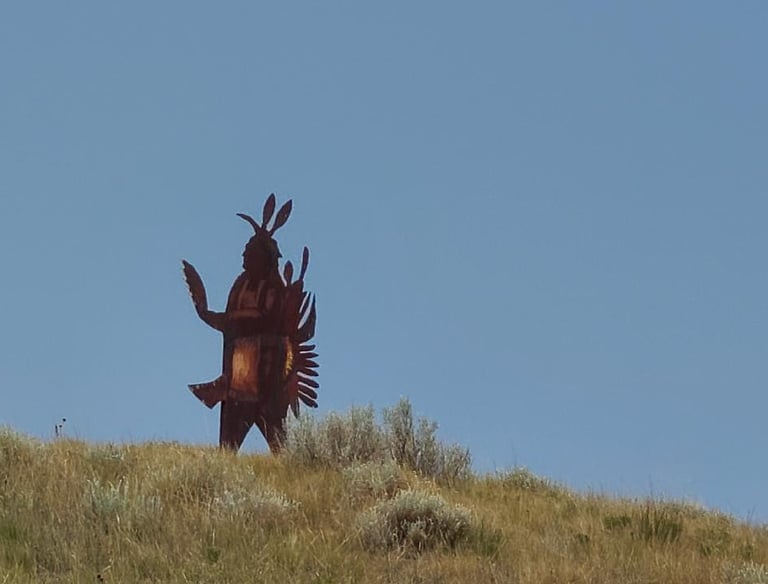

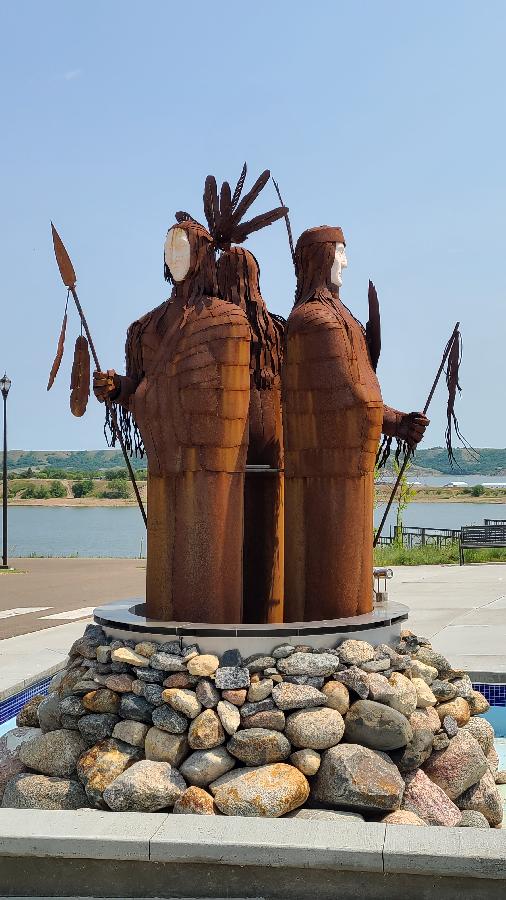

Share your comments on Facebook or email us at roadfronts@gmail.com
Subscribe for monthly updates
Current location:
